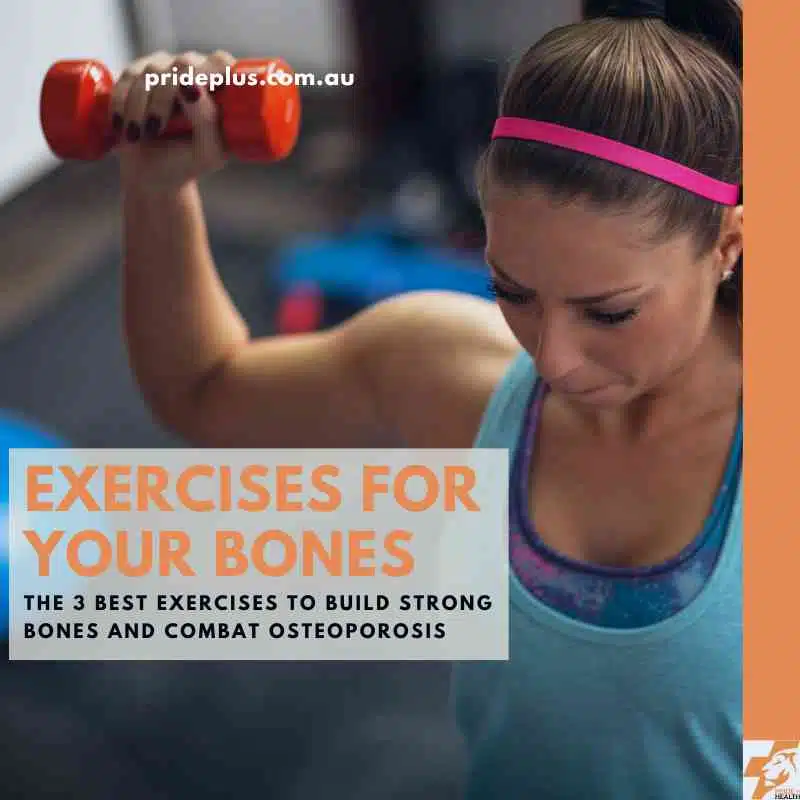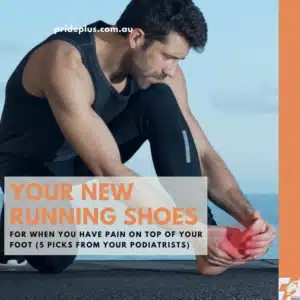In the next 4 minutes, I’m going to show you the best types of exercises for osteoporosis that you can do.
And if you’re reading this, you know how vital exercise for osteoporosis is for you. Getting the right amount and the right types of exercise done for your bones can be the difference between living a full and energy-filled life – and fractured bones from any little trip or stumble.
That might sound scary to you.
But it’s the truth that far too many people live with every day when thinking about their bone density and bone health. If that’s you right now, come with me on a journey to strong, healthy bones… via the 3 best types of exercise for osteoporosis.
But first, a quick summary of what you’re doing which isn’t enough to keep your bones strong and healthy when you have osteoporosis.
Medicine and milk aren’t enough to beat osteoporosis
You know you need to drink milk to get calcium for your bones. And your doctor has talked to you about vitamin D supplements and Prolia injections every 6 months too. But that’s not enough.
Why?
The best exercises for osteoporosis actually tell your body to build stronger bones (as well as give you a whole host of other benefits too). Calcium, vitamin D, and medicines are all important to your bone health too – but if you don’t do the right exercises for osteoporosis your body won’t actually know it needs to build your bones strong again.
So let’s jump in.
Here’s what you need to be doing to get your bones strong and healthy again.
Impact training exercises for osteoporosis
High-impact vs. low-impact training can be the difference between making your bones strong or just getting your heart rate up.
Not that getting your heart rate up or sweating is a bad thing, but impact training is the most effective form of exercise to promote stronger bones.
So what is it?
Impact training is a type of exercise where we stress our bones through the impact between our bodies and the ground. We usually divide them into high impacts and low impacts. Where a given exercise falls, depends on how much they stress the bone.
For example, higher impacts include jumping, hopping, and skipping. Compare those exercises to lower impacts like stepping up and down steps. There is quite a difference in the amount of force going through our bones between those exercises and there lies the difference.
You might not be able to start straight away with impact training.
To be a good selection of exercises for osteoporosis for you, you first must have a solid foundation of strength and time put into learning proper technique before you start. Once that’s ticked off you are good to go.
As you progress, you’ll start with a bunch of low-impact exercises. There’s plenty of literature outlining just how safe it is for you if you have osteoporosis to do low-impact exercises. For many of you reading this, you’re probably already doing some of these at home and you’re all set to continue.
But it gets more tricky with high-impact exercise.
The most recent evidence suggests that high impacts are both safe and vital exercises for osteoporosis, provided that you’re highly supervised.
So these are the ones you shouldn’t try on your own. You need to work up to them and they need to be prescribed just for you while you’re trained by your exercise physiologist.
With this high-impact training, you will feel more mobile, faster, and certainly more confident on your feet. Over time, you’ll see your bone mineral density scores (on a DEXA scan) start to improve.
Something to be really proud of – well done you!
Resistance training
Resistance training is also one of the key types of exercises for osteoporosis.
Think about exercises where you’re lifting weights, pulling resistance bands, pushing medicine balls, or even just using your body weight like when you get up and down from a chair. If you’re moving this weight repeatedly with the purpose of getting stronger or getting fitter you are completing resistance training.
Similar to impact training, the main idea is to stress and put a load through your bones. This can stimulate bone growth and slow the rate of bone loss. To get this outcome you need to check off two main points. You need to do enough of it and it must challenge you appropriately.
So what is enough?
Well, most of the researchers say about 2-3 sessions of resistance training a week is great for the regular person and someone living with osteoporosis.
I think this is a good recommendation BUT it’s only good for bone density IF you are being challenged by those exercises and the loads being put through your body in some way.
So how do we pick the challenge?
Let’s say we do an exercise like calf raises where you’re lifting your heels up, pushing through your big toes, and slowly lowering down over and over again. We might get you to do this exercise until you can’t perform it anymore with good technique. Let’s say you got 15 repetitions. That would be your maximum.
From there we might chop a few reps off the end and say that 12 repetitions are the perfect number for you to find the exercise challenging yet still do the exercise with good technique.
We can also apply this to all exercises we do to get stronger and build more muscle.
The beauty of exercise is that the benefits transcend your very specific, narrow goal. In doing resistance training for your bone health you are getting many other benefits like improving the health of your joints, improving how well your body responds to insulin, reducing your risk of falling, and reducing the risk of many other health conditions outside of OP.
And maybe the most important thing…
You just feel better.
Balance and mobility exercises for osteoporosis
When you live with osteoporosis you’re at much higher risk of having a fracture after a fall.
These fractures and broken bones when you have osteoporosis can lead to lots of nasty problems that can result in long hospital stays and ongoing issues.
So you want to avoid breaking a bone as much as possible, and the best way to not break a bone from falling over is to not fall over. And that my friend, is where your balance and mobility training comes in.
We know that if your balance is poor, your toe flexor strength is low, or your walking speed is slow you’re at a greater risk of falling over. (There are a few others too including ground clearance and sore feet but let’s focus on the first three).
When you’re doing your balance and mobility exercises for osteoporosis with your exercise physiologist you’ll work on each of these in your sessions.
Balance training must challenge your balance (it can’t be too easy) although it must still be safe. Think about standing on one leg or maybe just with your feet together. Think about what it would feel like to stand on a piece of foam that seems to move beneath your feet. Maybe these are things you can do safely but still challenge your balance. These exercises are perfect for testing how well we balance when we are standing still.
Mobility training is a little different. Mobility training focuses on improving the way you move. Think about how big your steps are, do you lift your knees up high, or do your feet shuffle along the ground? Do you walk fast or walk slow? Mobility training can address all these things and can help you move better.
Toe flexor strength is how well your toes can press back onto the ground to keep you upright when you’re standing. If you lean or sway side to side (or shuffle) there’s a good chance you’ll need to do some calf raise exercises to focus on getting your toes strong again.
I’ve seen so many people just like you who start doing more balance and mobility exercises and then get better balance scores, become more confident on their feet, walk faster and move better too.
After you work on balance and mobility training for a while, you can transform into the confident person you want to be with the help of your exercise physiologist. I want to see you proud of how well you’re walking, not frightened to walk on the grass, and not frightened of the footpaths out the front of your home.
Before you go…
Now you’re primed to get your bones strong with these exercises for osteoporosis, I wanted to help you even more.
If you’re local to me in Pascoe Vale we have our Strong To The Bone program where you’ll train up your bones to fight osteoporosis and the fear of breaking your bones. I also have some handy information related to bone density including understanding your DEXA scans and what supplements are recommended for osteoporosis.
About the Author

Pascoe Vale Exercise Physiologist Aidan Rogers is on a mission to help 50 more people with osteoporosis or low bone density live their best lives in Pascoe Vale. He’s seen firsthand just how well his clients thrive when they get the right exercises for osteoporosis done in a fun and supportive environment.




